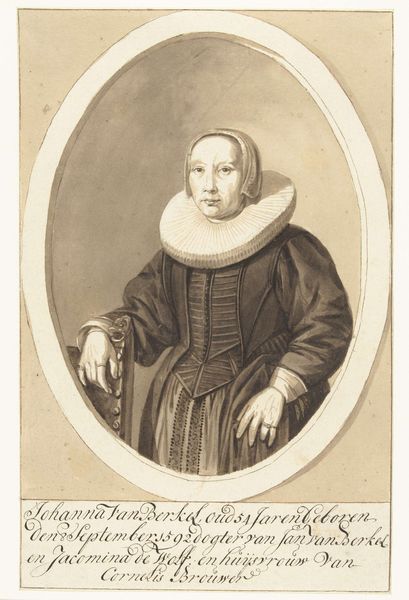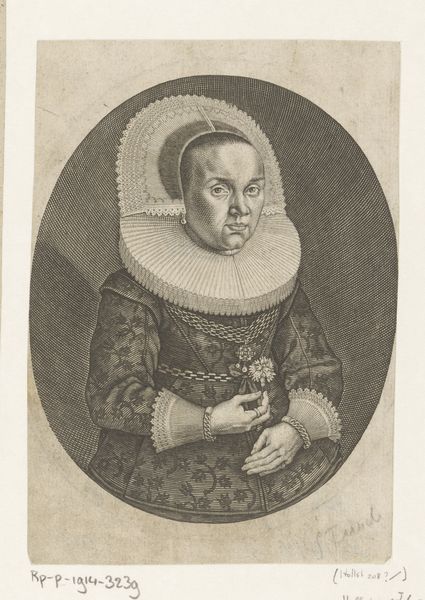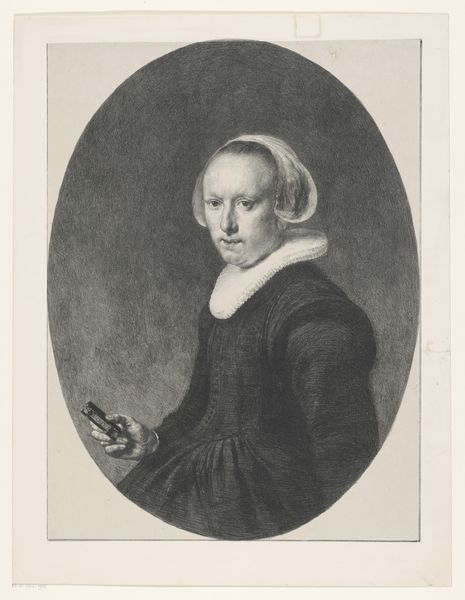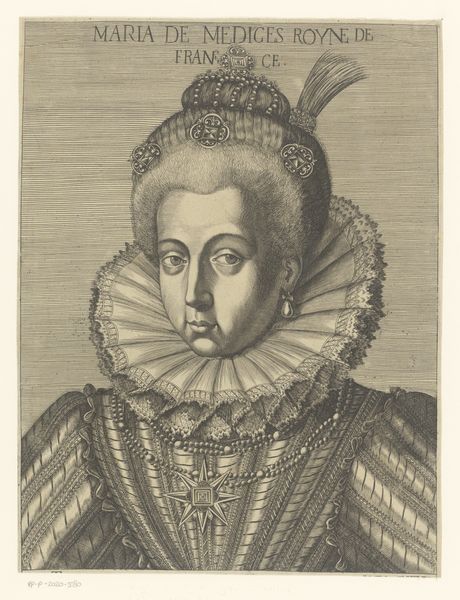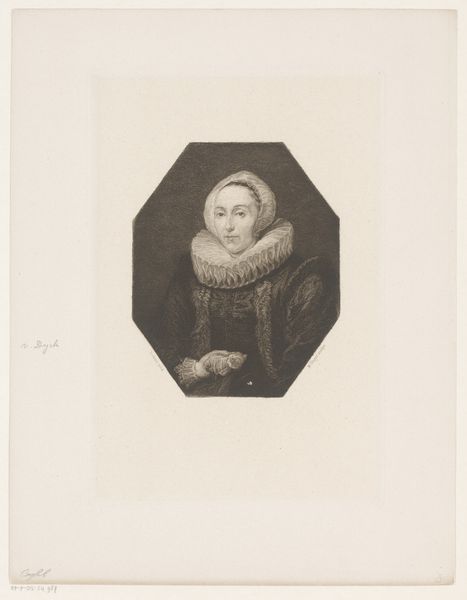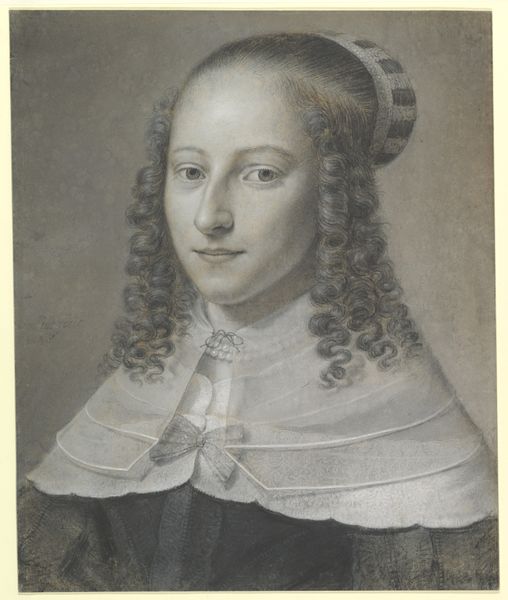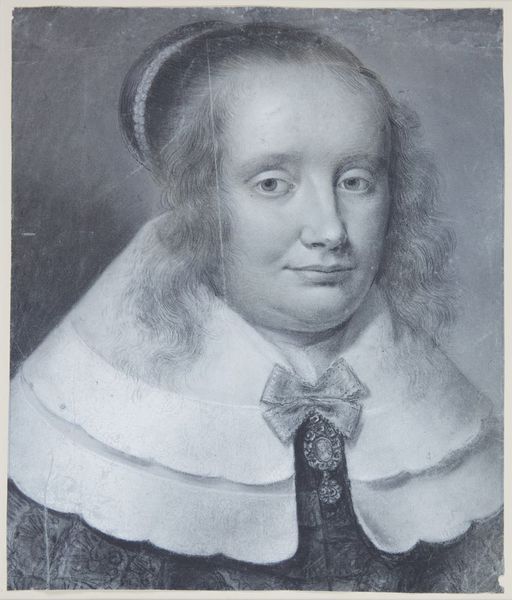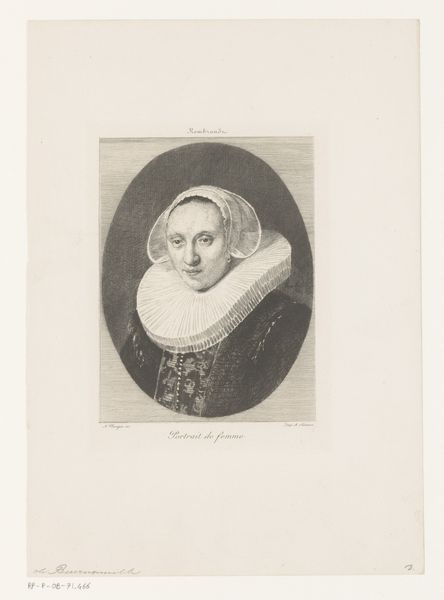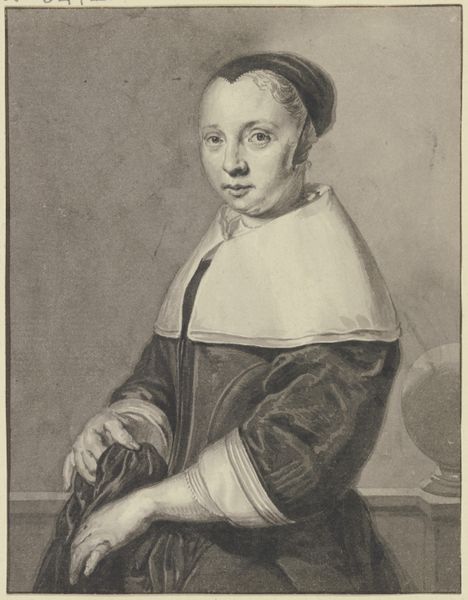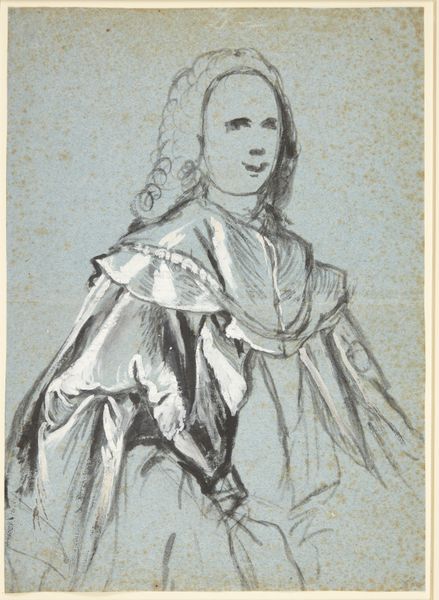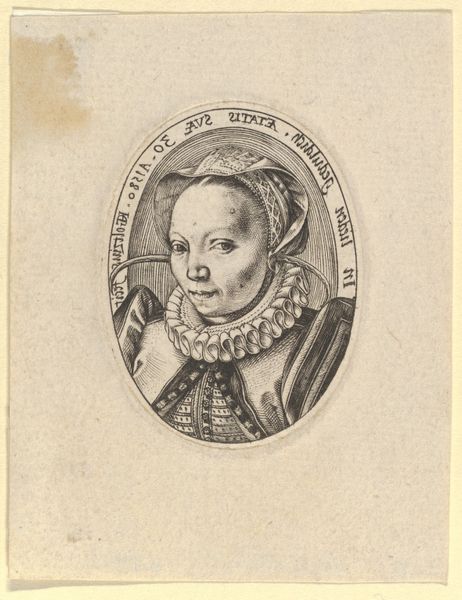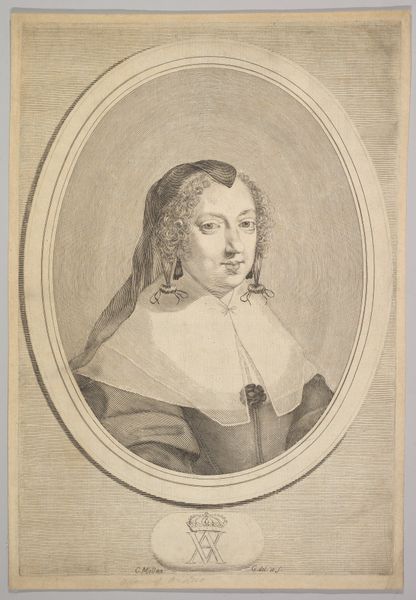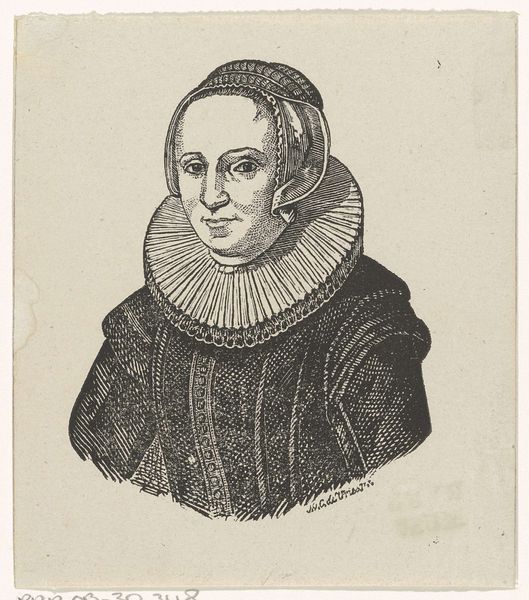
drawing, graphite
#
portrait
#
drawing
#
pencil sketch
#
charcoal drawing
#
pencil drawing
#
graphite
#
portrait drawing
#
academic-art
#
realism
Dimensions: height 242 mm, width 210 mm
Copyright: Rijks Museum: Open Domain
Curator: This is a portrait drawing of Cornelia Pronck, attributed to Jean Bernard and created sometime between 1775 and 1833. The piece resides here at the Rijksmuseum. Editor: It's captivating. A pencil and graphite drawing evokes a strong sense of realism and introspection. I'm immediately struck by the detail in the ruff and the soft gradations of tone. The subject appears somber, doesn't she? Curator: Indeed. Consider how Bernard employs delicate lines to define the facial features and convey depth, lending realism through light and shadow. Focus, especially, on the structure of the face. The almost mathematical structure contributes to the impact. Editor: Absolutely. I see a woman presented within constraints of societal expectations of the era. Her clothing, the iconic ruff, and head covering serve not only as markers of status but also visual indicators of controlled femininity within 18th-century Dutch society. Curator: I see your point. Semiotically, her attire and expression contribute to a reading of formality and reserved elegance. But looking beyond any assigned symbolic value, appreciate how the geometric pleating in the ruff contrasts with the curves of her face and soft lighting, drawing us to the nuances of craft. Editor: I cannot disconnect the aesthetic choices from cultural realities. We are invited to ponder upon gender and representation during that period, which speaks volumes regarding power and subjugation through the female form. Even so, I wonder about Cornelia, herself, a subject of her own making who confronts expectations through self-assured gazes! Curator: The subtle rendering is the point. I can accept that any subject can convey messages about cultural dynamics while being, simply, well-represented using structure. A focus on Bernard’s composition should, in no way, negate your interpretive overlay. Editor: Of course. Examining artworks through multiple lenses only enriches our understanding of history and humanity. What strikes me is that a rather austere portrait drawing invites such a complex array of readings. Curator: Yes, by employing focused application of materials, it succeeds formally on one plane while facilitating engagement for broader critical discourse across another.
Comments
No comments
Be the first to comment and join the conversation on the ultimate creative platform.
